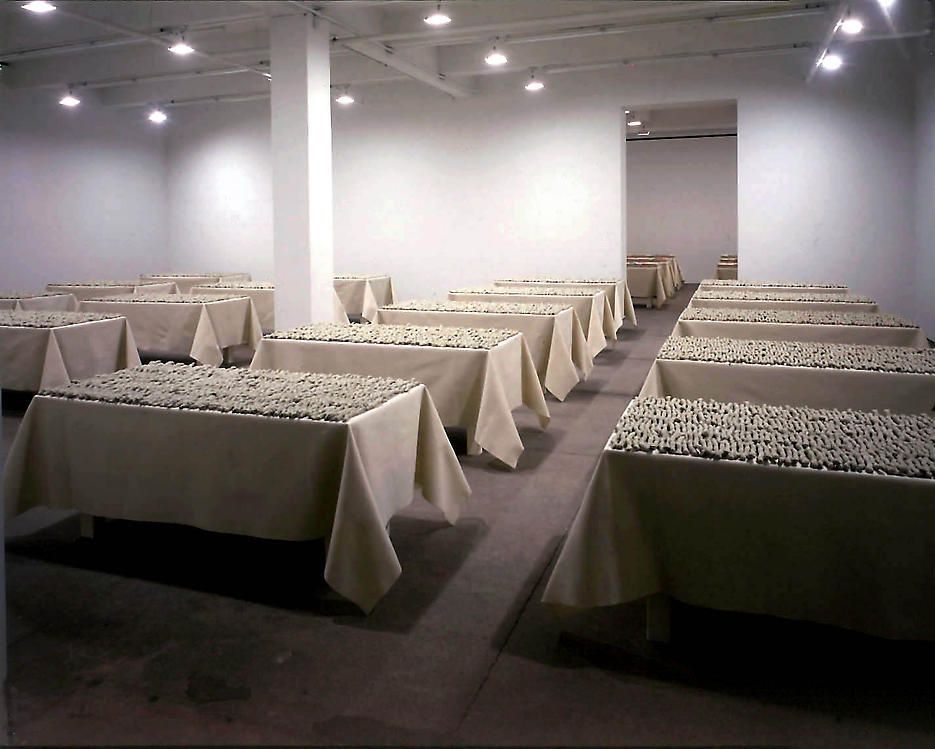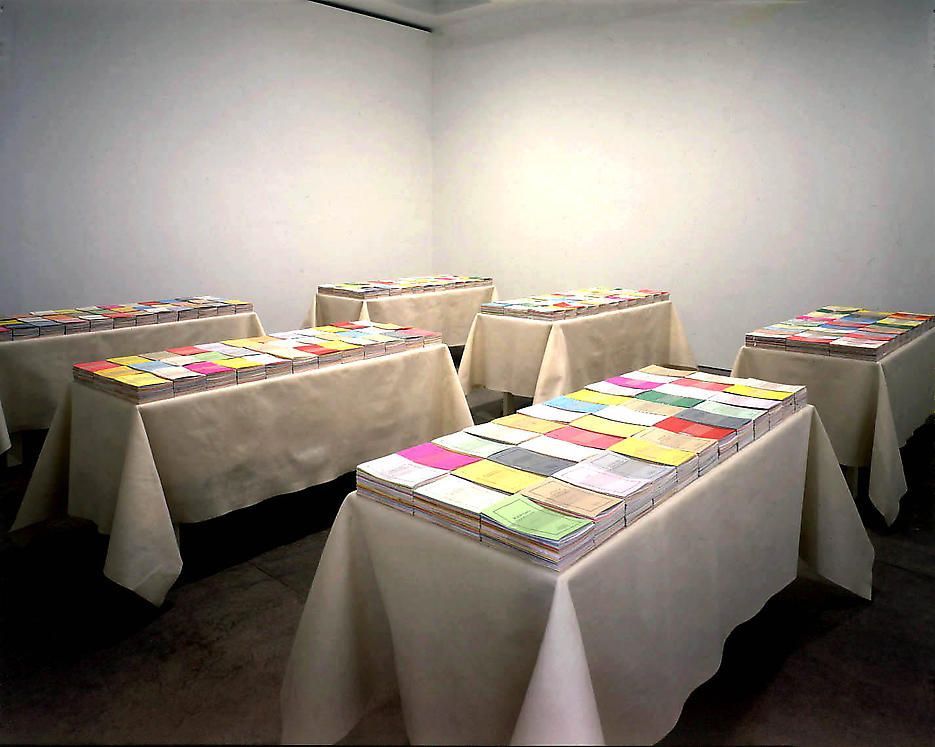 Allan McCollum, THE EVENT: Petrified Lightning from Central Florida (with supplemental didactics). 2000.
Allan McCollum, THE EVENT: Petrified Lightning from Central Florida (with supplemental didactics). 2000.
Installation: Friedrich Petzel Gallery.
ALLAN MCCOLLUM
at FRIEDRICH PETZEL GALLERY
Allan McCollum spent his 1997 summer vacation collaborating with scientists on a project involving launching small rockets into storm clouds above a desolate region of Central Florida to trigger lightning bolts. The point was to create "fulgurites," or "frozen lightning," shafts of fused earth that result when celestial electricity strikes soil. The rockets had hair-thin copper wires trailing behind them. Electric current traveled down the wires into zircon sand, liquefying it with temperatures of up to 50,000 degrees Fahrenheit. McCollum dug the resulting rods out like fragile fossils, then chose one to be reproduced by a local souvenir maker out of the same pale sand as the original.
Recently, the fruits of this undertaking made a New York appearance in "The Event: Petrified Lightning from Central Florida (With Supplemental Didactics)." In Petzel's spacious new Chelsea gallery, 10,000 6-inch rods, the fake fulgurites, were positioned in compulsively neat formations, forming a monochrome panorama on 20 tables. The vast array of unadorned, bone-colored shapes brought to mind 1970s style Earth art installations. A monitor in the gallery replayed a short video showing the blinding flash as lightning traveled down the copper filaments from rocket to earth.

The Event: Petrified Lightning from Central Florida (with Supplemental Didactics), 1998. Over 13,000 booklets, with 66 stories about lightning and fulgurites. Collected and edited by the artist.
In an adjacent room, scientific articles on fulgurites, lightning and lightning-related topics, as well as text on McCollum and this project, were reprinted and bound into 13,000 individual booklets with multicolored but uniform covers and displayed in stacks on tables. Titles included "The Origin and Occurrence of Fulgurites on the Atlantic Coastal Plain," "References to Lightning in the Holy Bible" and "Thanks," a collection of acknowledgments.
"The Event" deployed a dry, quasi-scholarly approach that in a way parodied the natural history museum exhibition. But behind McCollum's ironic postmodernism lurks a Romantic soul. The piece—particularly the "Event" itself—involved a genuine commitment to in-depth research and interaction with a group of scientists. It also involved a heroic waiting game, as McCollum stood patiently waiting to tease out just the right flash to create a satisfying esthetic formation. In the end, it represents what has to be seen as a heartfelt collaboration with nature.
Conceptually, fulgurites are fascinating, natural "casts" fused in an instant of cosmic violence.
McCollum's assemblage of mute objects is a kind of relic. "The event" lies elsewhere, earlier, underscoring the fact that all art is a souvenir of something that happened somewhere else—a recording of a distant thunderclap of inspiration.
—Carey Lovelace
|